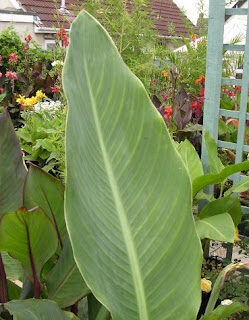
Species
In the wild, species (shorthand sp.) are more or less uniform in habit, foliage, flowers and fruit. Any variation is part of an evolutionary process, and botanists apply subdivisions within a species (sub-species, varietas, and forma) to recognise such differences. All remain more or less stable in the wild, but when grown together in cultivation they may hybridise and the distinctions become blurred. This variation is exploited by gardeners who select (recognise and name) an individual plant, and propagate to maintain it.
Sub-species
A sub-species (shorthand ssp.) is a “mini-species” with distinct morphological or genetic variation, and a sometime distinct geographical distribution. I don’t believe that Canna have any defined sub-species, certainly not in Dr Tanaka’s revision of the Canna species.
Variety
A variety (or varietas, shorthand var.) is a wild variety, and its differences from the species are less clear-cut than a sub-species, e.g. Canna indica var. maculata.
Form
The form (or forma, shorthand f.) is used for colour variations or similar minor differences, such as country of origin.
Hybrid
If several species of one genus are cultivated together, they may hybridise (shorthand x), giving rise to offspring sharing characters of both parents, for example Canna x ehemanni (C. iridiflora x C. indica var. warsczewiczii). Seedlings from these crosses may vary, and may be selected and given cultivar names. If the resulting hybrids are fertile, several generations of plants may be produced. In time, the parentage of the offspring becomes obscured, reflected in the style of names chosen, for example Canna ‘Ehemanni’.
There are also variations, when we refer to F1 and F2 hybrids, but those require a separate explanation as we are then categorising genetic variation.
Cultivar

Sports
Sports are mutations resulting from genetic change, which produce shoots or flowers differing from those of the parent plant. If a mutation is propagated vegetatively it may be named as a cultivar and maintained – many variegated plants occur this way. Not all sports are stable; some often resort to the parent’s characteristics, e.g. C. ‘Stuttgart’, top picture, is said to revert to C. ‘Omega’, right picture.
Conclusions
There is no rocket science about this terminology, it is just a simple and straightforward way of classifying our wild and garden raised plants.